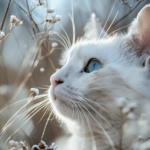Have you ever watched your feline companion twist into what seems like an impossible pretzel shape for a nap? Or wondered why they insist on sleeping in that adorable bread loaf position when they have a perfectly good cat bed nearby? Your cat’s sleeping habits might be more telling than you realize.
Understanding where and how your cat sleeps can give you insight into their mood and overall well-being, offering a fascinating glimpse into the mysterious world of feline emotions. From the classic curl to the vulnerable belly-up pose, each position tells its own story about how your furry friend is feeling. Let’s dive into the secret language of cat sleeping positions and discover what your kitty is really trying to tell you.
The Classic Curled Ball – Your Cat’s Security Blanket
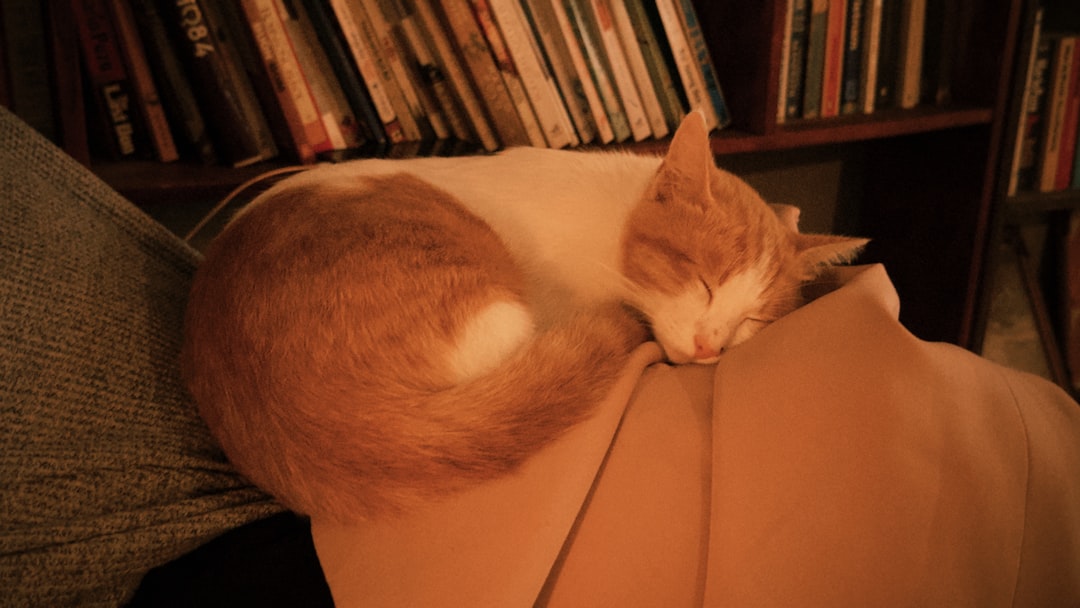
The curled-up position, often resembling a crescent roll or a shrimp, is one of the most typical sleeping postures for cats. This classic “cat curl” is not just for comfort, it serves practical purposes as well. When your cat transforms into a furry donut, they’re doing something deeply instinctual.
Cats who sleep curled up like the extra warmth and protection. These cats are comfortable, content, and relaxed. They feel unthreatened and love their home. This position allows them to conserve body heat while keeping their vital organs protected, showing they feel secure enough to rest but still maintain some natural caution.
The Loaf Position – Alert Yet Comfortable
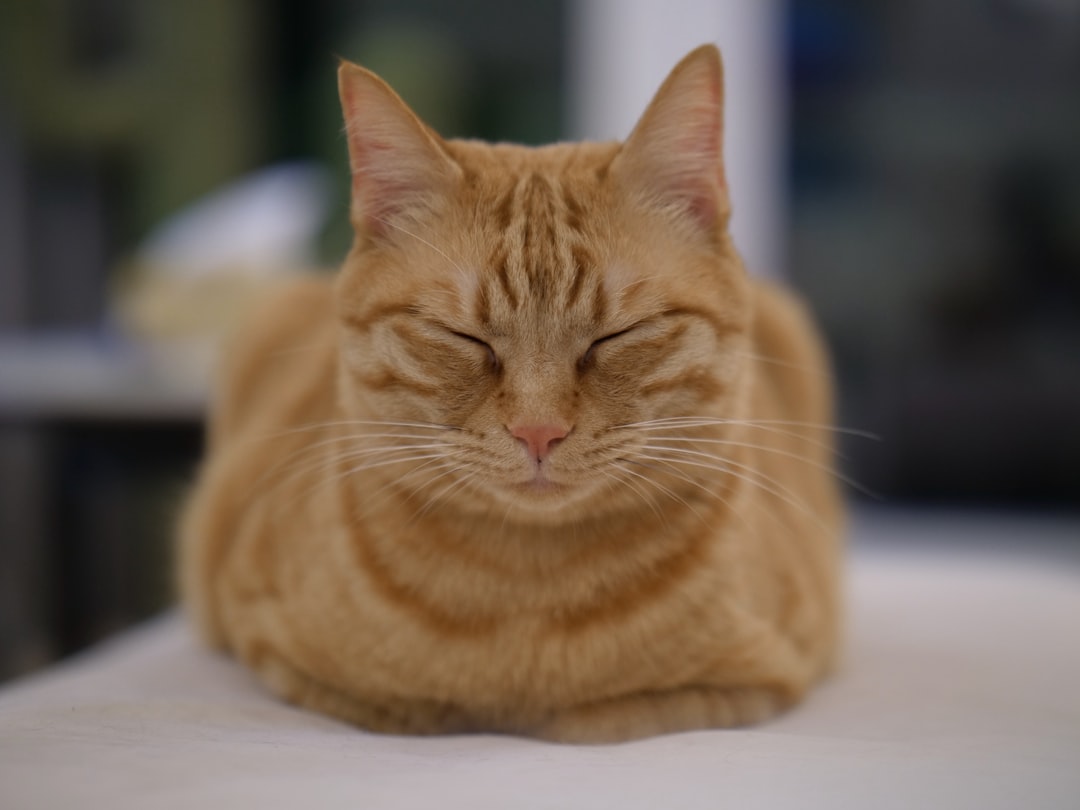
The majestic loaf pose, where your cat lies with their paws tucked in, resembling a perfectly baked loaf of bread. This cat sleeping position isn’t just cute – it serves a purpose! Tucking in their paws keeps them warm while your cat stays alert. They’re just taking a quick catnap, ready to pounce into action at a moment’s notice.
This position perfectly captures the dual nature of domestic cats. This indicates a relaxed but alert state. Your kitty is comfortable with their surroundings yet maintains the ability to spring into action if something interesting happens, like the sound of a treat bag rustling or a mysterious noise outside.
Belly Up – The Ultimate Trust Signal
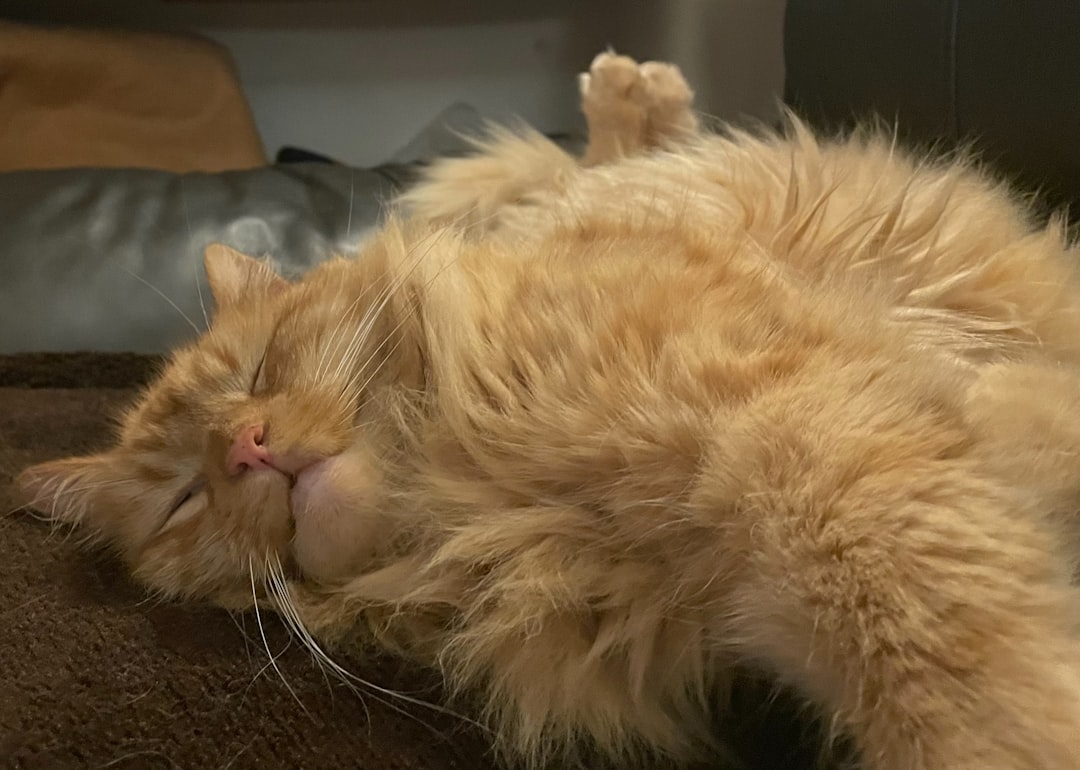
Sleeping on the back with the belly exposed indicates total relaxation and wellbeing. The cat’s stomach is the most vulnerable part of their body, lying flat on the back with the legs extended in the air unable to quickly escape in case of danger exhibits total trust. This vulnerable position is like your cat’s way of saying they have complete faith in their environment.
When your feline friend sleeps belly-up, it’s essentially the cat equivalent of leaving your front door unlocked. A cat laying on their back with an exposed belly shows high trust and comfort. However, resist the temptation to rub that fluffy tummy – most cats still prefer not to be touched there, even when they appear completely relaxed.
Side Sleeping – Relaxed but Ready
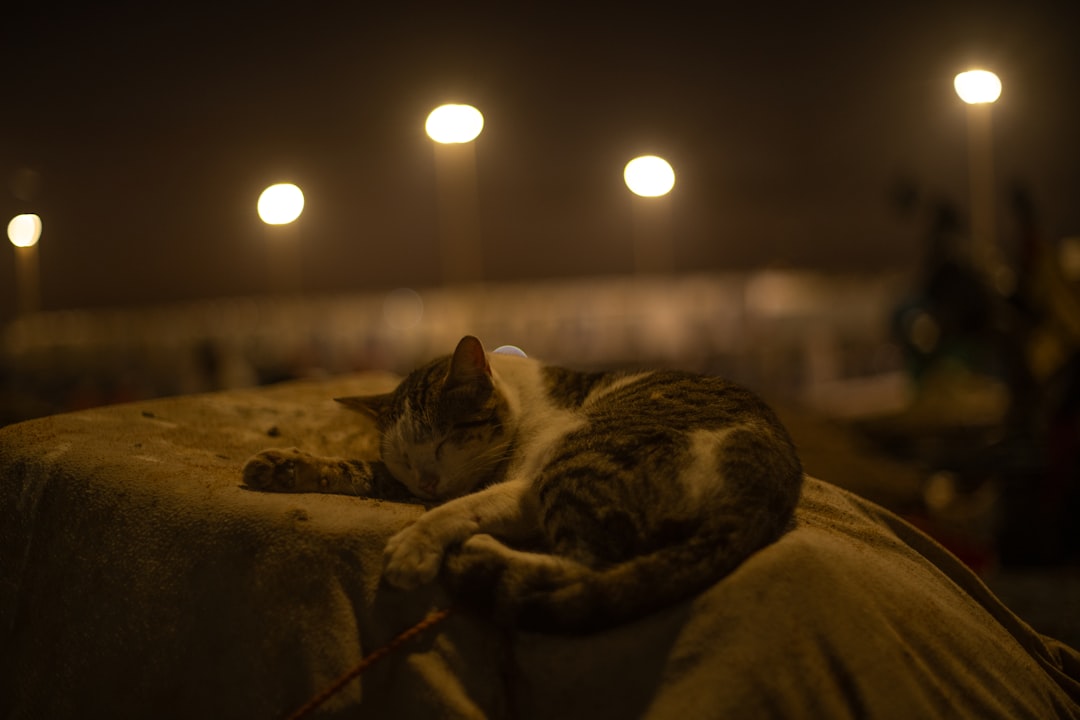
A sideways sleeping posture indicates your cat is relaxed however not always in deep sleep mode. Their belly is exposed, and their limbs are protracted out nevertheless your kitty is content but alert. This position strikes a perfect balance between comfort and preparedness.
When you catch your cat lounging lazily on their side, limbs dangling in blissful abandon. This relaxed position means they feel completely safe and at ease. It’s a sign of deep trust and total comfort – they’ve officially hit snooze mode and are indulging in some well-deserved beauty rest. Yet they can still react quickly if needed, making it an ideal compromise position.
The Monorail – Creative Comfort Seeking
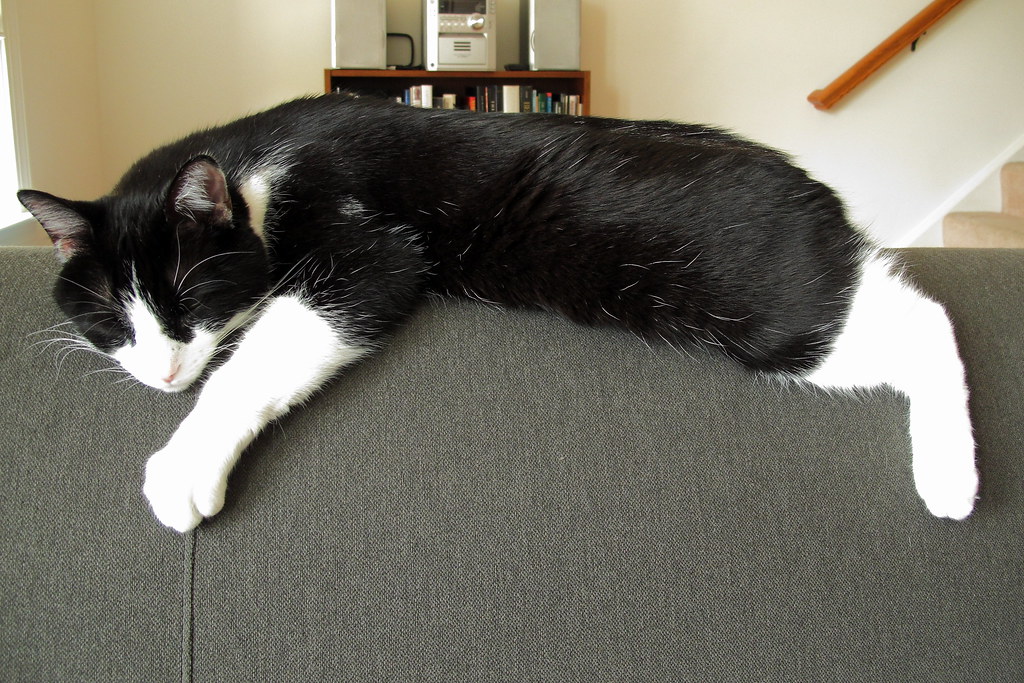
You may notice your cat sleeping on the arm of your couch, a handrail or a fence beam with his front legs hanging low in front of him. This is sometimes called a “monorail,” and large, wild cats often use it when sleeping in big trees. It’s a comfortable position where your cat feels safe.
This quirky position might look uncomfortable to us humans, but cats find it surprisingly cozy. Their incredible flexibility allows them to rest in spots that would leave us with serious muscle cramps. When your cat chooses to sleep draped over a narrow surface, they’re channeling their wild instincts while enjoying the security of an elevated perch.
Covering the Face – Leave Me Alone, Please
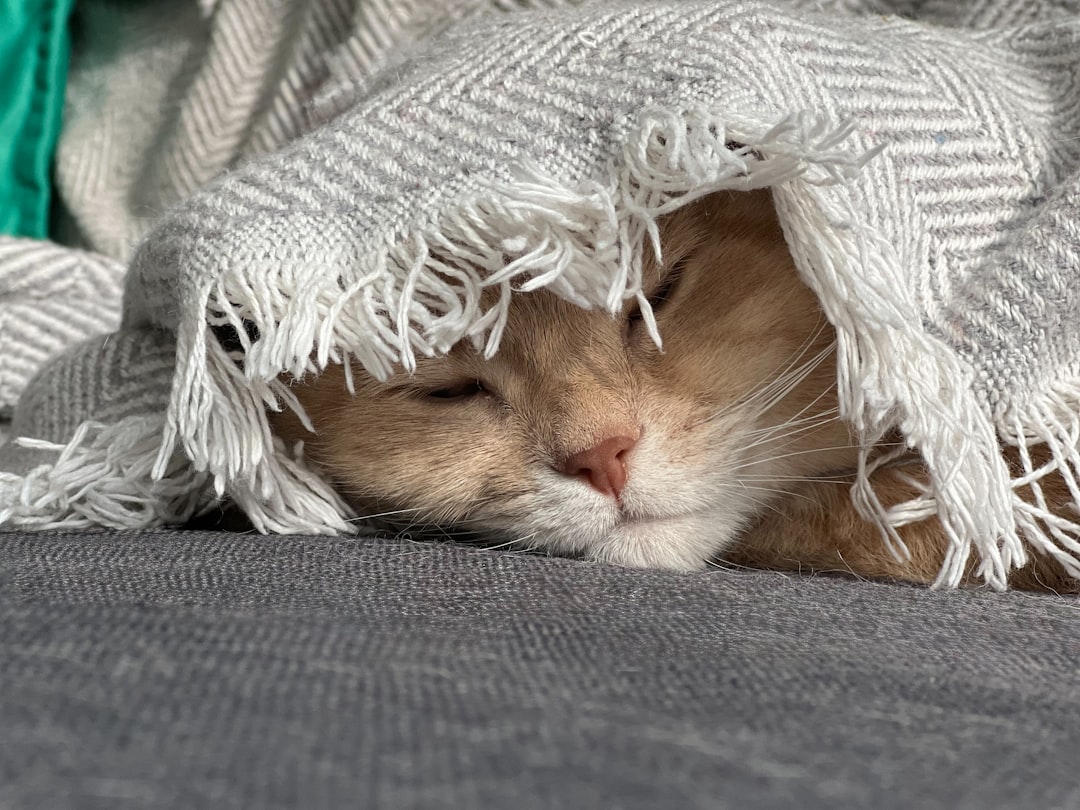
In this sleeping position, your cat is sending a clear message that they do not want to be disturbed while they are asleep. If you see your cat with their paws covering their face, think of it as your kitty wearing an eye mask to bed, attempting to keep disturbances to a minimum while they get their beauty rest.
This adorable position serves practical purposes like blocking light and keeping the face warm. Think of it as your cat’s version of pulling the covers over their head. When they sleep this way, they’re seeking deeper, uninterrupted rest and would appreciate not being awakened for non-essential cuddles or photo opportunities.
Sleeping on You – The Ultimate Compliment

Cats sleeping on top of their pet parents likely want to be close to their human companions. Your cat might sleep on your chest to hear and feel your soothing heartbeat. It also could be that your cat wants to take advantage of your body heat. This behavior represents the highest level of feline affection and trust.
Cats that sleep in contact with others display social bonding behaviors. This suggests a high degree of emotional security and affection if your cat chooses to sleep against you. Whether they choose your chest, lap, or feet, each spot has its own meaning, from seeking warmth to maintaining easy escape routes while still enjoying your company.
Contorted Positions – Deep Sleep Indicators
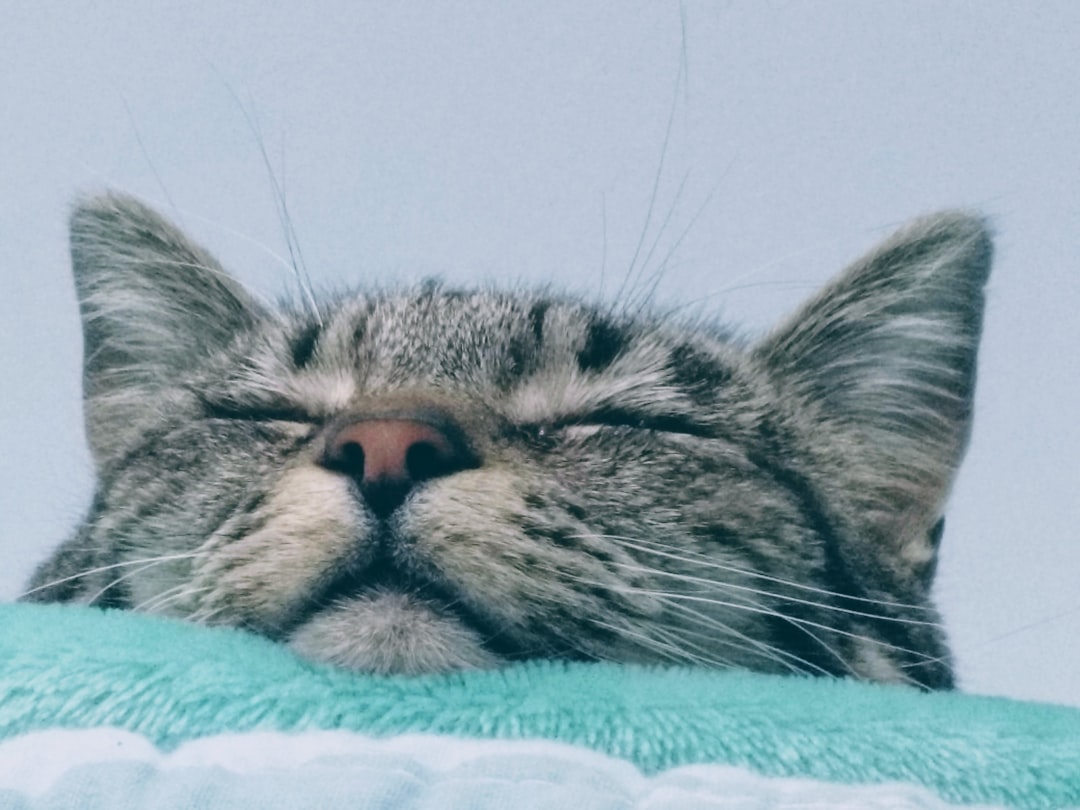
Watch in wonder as your feline acrobat twists and turns into a shape that defies explanation and imitation. This quirky pose signals a playful mood, with your cat itching for some post-nap shenanigans. This position shows they’re flexible, both physically and mentally, and ready for anything the day may bring.
When your cat looks like they’re defying physics, limbs at odd angles, head upside-down, it’s not cause for worry. These quirky sleep postures just show your cat’s extreme flexibility and relaxation. The more twisted and impossible the position looks, the deeper your cat is sleeping and the more secure they feel.
Eyes Half Open – The Light Sleeper
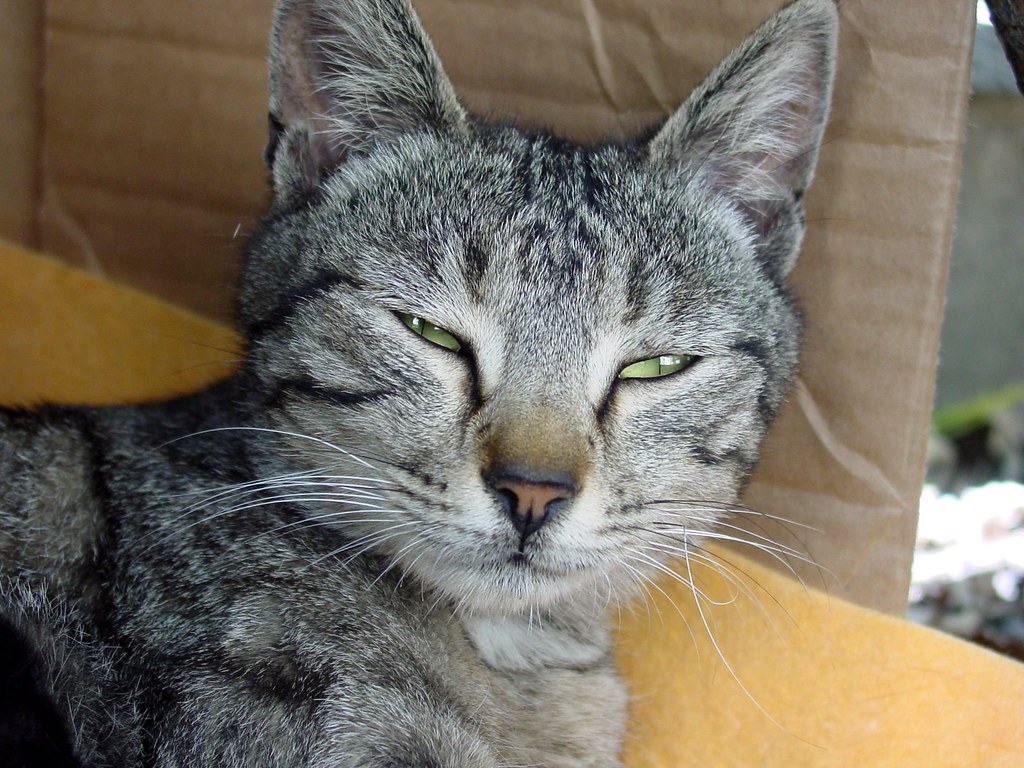
A cat that is snoozing with their eyes open to little slits is only half-asleep. They are still on the lookout for danger, potential threats, or even the chance to pounce on a meal. This behavior is linked to your kitty’s wild origins, where cats of all types have to find their own food and avoid becoming food for someone else.
This position reflects their natural survival instincts perfectly preserved in domestic life. Cats often sleep with half-open eyes and moving ears to stay on alert – both for possible threats and potential prey. Even in the safety of your home, some cats maintain this vigilant approach to napping, especially in new environments or during times of change.
Hiding Away – When Something’s Not Right
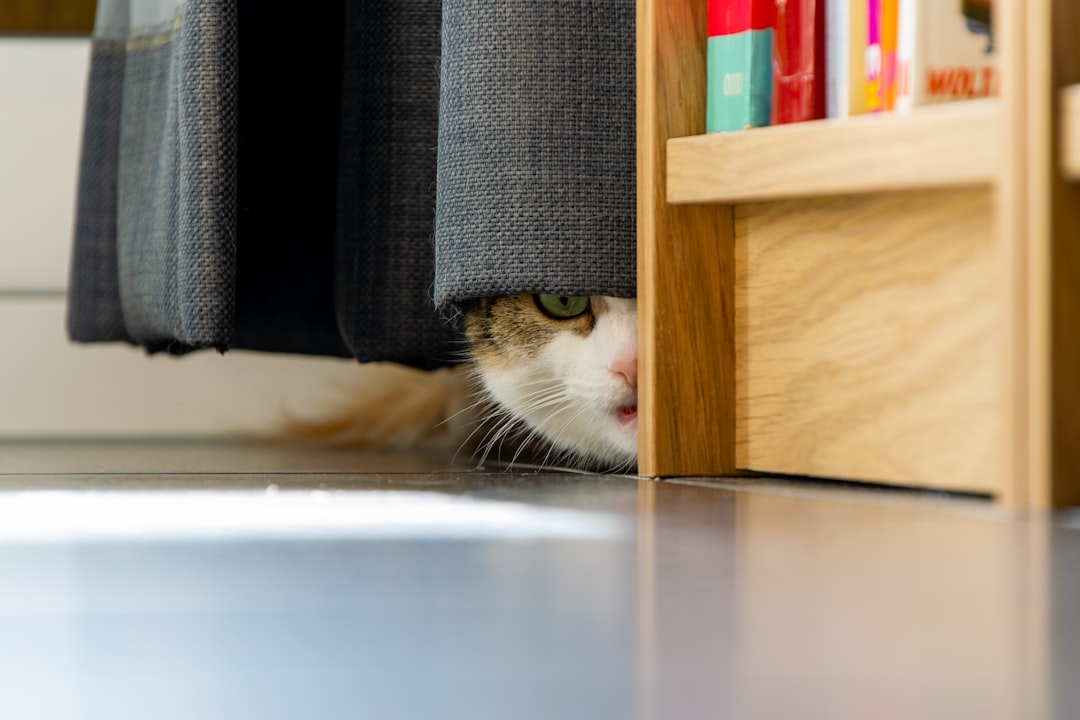
A shift to secluded sleeping areas, such as under furniture or in closets, warrants attention. This behavior may signal anxiety, stress, or physical illness and should be monitored closely. When your normally social cat suddenly starts sleeping in hidden spots, it’s worth paying attention to this change in behavior.
Anxious or skittish cats prefer to hide or conceal themselves in small dark confined spots (wardrobes or under bedding), while confident cats like to shelter themselves for uninterrupted sleep-in boxes, tunnels plus bags while kitties with joint disease prefer warm, easily accessible cat-beds. The key is knowing your cat’s normal habits and recognizing when something shifts significantly from their usual patterns.
Conclusion
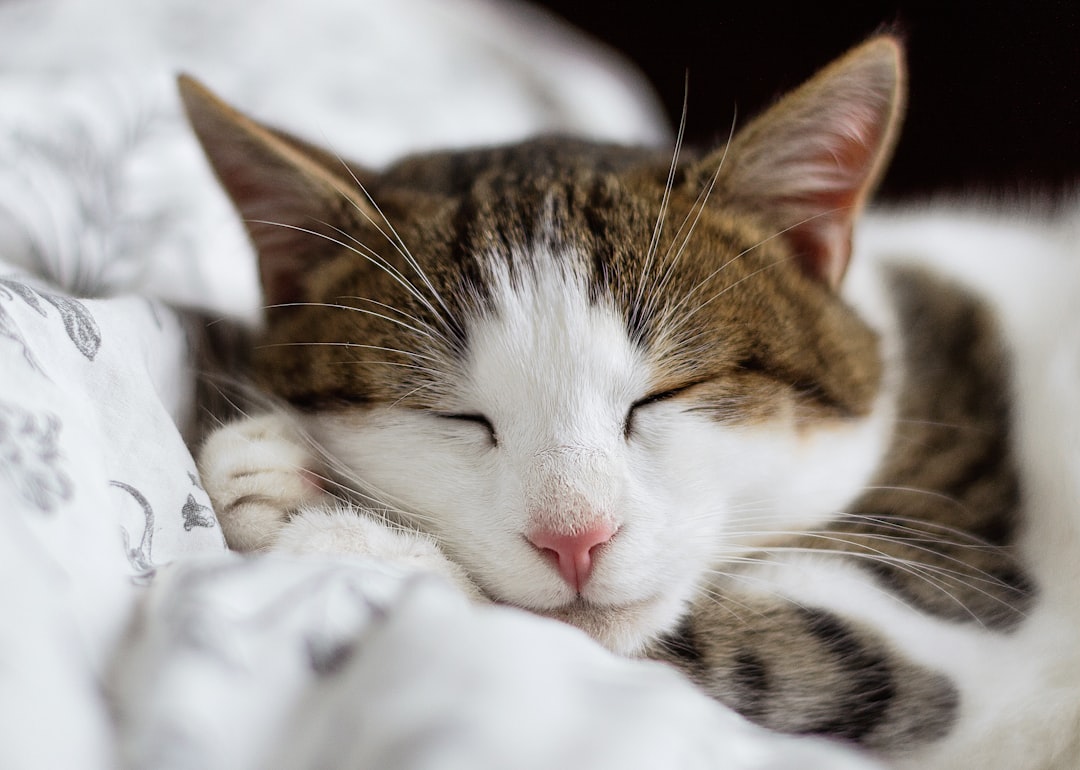
Your cat’s sleeping positions offer a fascinating window into their inner world, revealing everything from their comfort level to their health status. By understanding the meaning behind your cat’s sleeping postures, you gain deeper insight into their physical and emotional well-being. Each position, whether protective, affectionate, or symptomatic, communicates a unique narrative. Through attentive observation and responsive care, you can significantly enhance your cat’s quality of life while fostering a deeper and more empathetic bond.
The next time you find your feline friend in an adorable or seemingly impossible sleeping position, take a moment to consider what they might be telling you. From the vulnerable belly-up pose that screams “I trust you completely” to the alert loaf position that says “I’m comfortable but ready for action,” every snooze has meaning. What sleeping position does your cat favor most, and what do you think it reveals about their personality?



